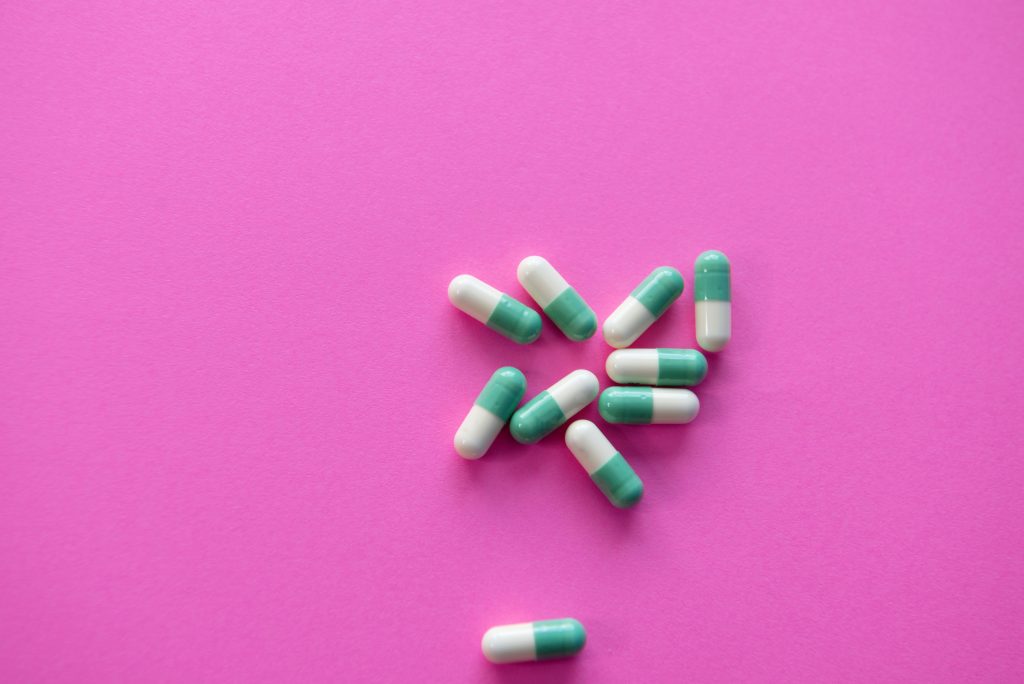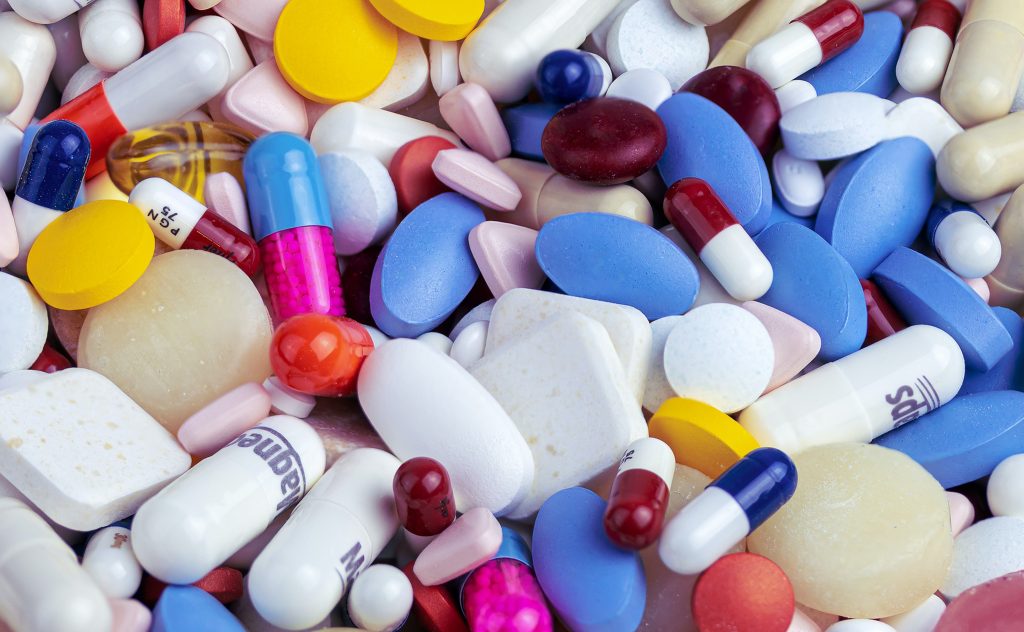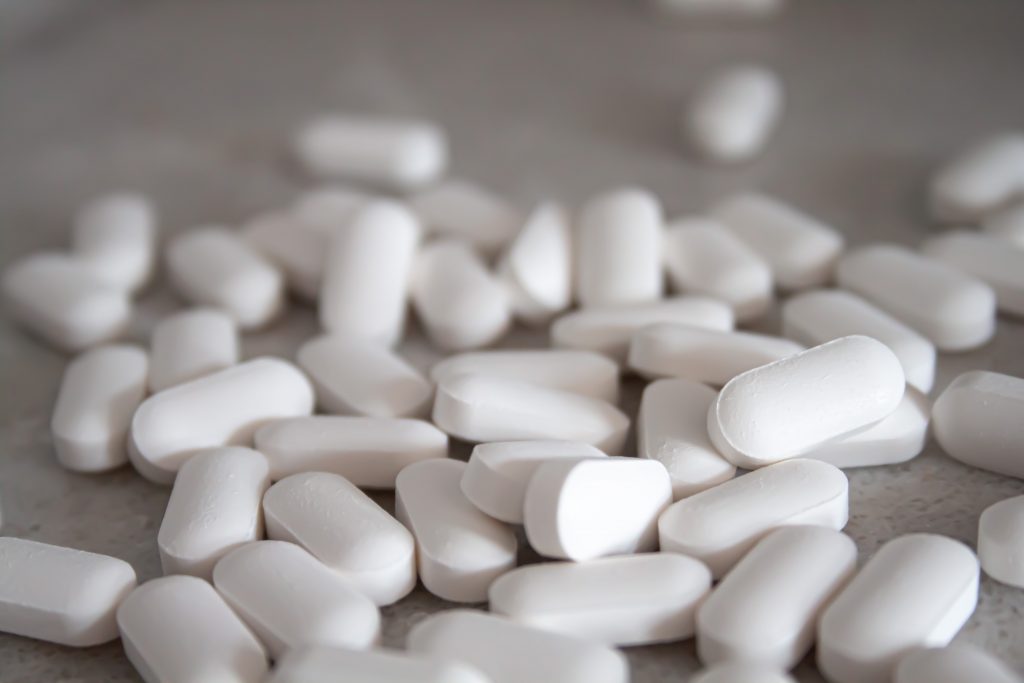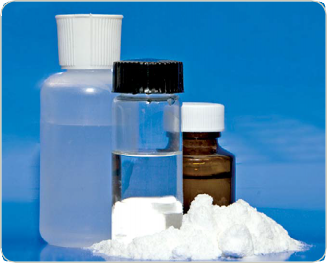5.6 Depressants
What Are Depressants?
Depressants work on your CNS (Central Nervous System) and will put you to sleep, relieve anxiety and muscle spasms, and prevent seizures. Barbiturates are older drugs and include butalbital (Fiorina), phenobarbital, Pentothal, Seconal, and Nembutal. A person can rapidly develop a dependence on and tolerance to barbiturates, meaning a person needs more and more of them to feel and function normally. This makes them unsafe, increasing the likelihood of coma or death.
Benzodiazepines were developed to replace barbiturates, though they still share many of the undesirable side effects including tolerance and dependence. Some examples are Valium, Xanax, Halcion, Ativan, Klonopin, and Restoril.
Lunesta, Ambien, and Sonata are sedative-hypnotic medications approved for the short-term treatment of insomnia that shares many of the properties of benzodiazepines. Other CNS depressants include meprobamate, methaqualone (Quaalude), and the illicit drug GHB. Alcohol will be covered in the next section.
What is their Origin?
Generally, legitimate pharmaceutical products are diverted to the illicit market. Teens can obtain depressants from the family medicine cabinet, friends, family members, the Internet, doctors, and hospitals.

What are Common Street Names?
Common street names for depressants include:
Barbs, Benzos, Downers, Georgia Home Boy, GHB, Grievous Bodily Harm, Liquid X, Nerve Pills, Phennies, R2, Reds, Roofies, Rophies, Tranks, and Yellows.
What do They Look Like?
Depressants come in the form of pills, syrups, and injectable liquids.
How are they Abused?
Individuals abuse depressants to experience euphoria. Depressants are also used with other drugs to add to the other drugs’ high or to deal with their side effects. Users take higher doses than people taking the drugs under a doctor’s supervision for therapeutic purposes. Depressants like GHB and Rohypnol are also misused to facilitate sexual assault.
What is their Effect on the Mind?
Depressants used therapeutically do what they are prescribed to induce sleep, relieve anxiety and muscle spasms, and prevent seizures. They also cause amnesia, leaving no memory of events that occur while under the influence, reduce reaction time, impair mental functioning and judgment, and cause confusion. Long-term use of depressants produces psychological dependence and tolerance.
What is their Effect on the Body?
Some depressants can relax the muscles. Unwanted physical effects include slurred speech, loss of motor coordination, weakness, headache, lightheadedness, blurred vision, dizziness, nausea, vomiting, low blood pressure, and slowed breathing. Prolonged use of depressants can lead to physical dependence even at doses recommended for medical treatment. Unlike barbiturates, large doses of benzodiazepines are rarely fatal unless combined with other drugs or alcohol. But unlike the withdrawal syndrome seen with most other drugs of abuse, withdrawal from depressants can be life-threatening.
What is their Legal Status in Canada?
Most prescription sedatives/depressants are classified as a Schedule IV drug under the Controlled Drugs and Substances Act (CDSA)(1). Their use is legal only when they are prescribed by specific licensed practitioners and are used by the person for whom they are prescribed. Possession of sedatives is not, in and of itself, illegal. However, “double doctoring” (i.e., obtaining a prescription from more than one practitioner without telling the prescribing practitioner about other prescriptions received in the past 30 days) can result in 18 months imprisonment. Trafficking, importing, exporting or the production of sedatives can result in three years imprisonment.
Barbiturates
What are Barbiturates?

Barbiturates are depressants that produce a wide spectrum of central nervous system depression from mild sedation to coma. They also have been used as sedatives, hypnotics, anesthetics, and anticonvulsants. Barbiturates are classified as: Ultrashort, Short, Intermediate, Long-acting
What is their origin?
Barbiturates were first introduced for medical use in the 1900s, and today about 12 substances are in medical use.
What are Common Street Names?
Common street names include: Barbs, Block Busters, Christmas Trees, Goof Balls, Pinks, Red Devils, Reds & Blues, and Yellow Jackets
What do They Look Like?
Barbiturates come in a variety of multicolored pills and tablets. Users prefer the short-acting and intermediate barbiturates such as Amytal and Seconal.
How are they Abused?
Barbiturates are abused by swallowing a pill or injecting a liquid form. Barbiturates are generally abused to reduce anxiety, decrease inhibitions, and treat unwanted effects of illicit drugs. Barbiturates can be extremely dangerous because overdoses can occur easily and lead to death.
What is their Effect on the Mind?
Barbiturates cause mild euphoria, lack of inhibition, relief of anxiety, and sleepiness. Higher doses cause impairment of memory, judgment, and coordination; irritability; and paranoid and suicidal ideation. Tolerance develops quickly and larger doses are then needed to produce the same effect, increasing the danger of an overdose.
What is their Effect on the Body?
Barbiturates slow down the central nervous system and cause sleepiness.
What are their Overdose Effects?
Effects of overdose include shallow respiration, clammy skin, dilated pupils, weak and rapid pulse, coma, and possible death.
Which Drugs cause Similar Effects?
Drugs with similar effects include Alcohol, benzodiazepines like Valium and Xanax, tranquilizers, sleeping pills, Rohypnol, and GHB.
What is their Legal Status in Canada?
Schedule IV of the Controlled Drugs and Substances Act (CDSA)(1).
Benzodiazepines
What are Benzodiazepines?

Benzodiazepines are depressants that produce sedation and hypnosis, relieve anxiety and muscle spasms, and reduce seizures.
What is their Origin?
Benzodiazepines are only legally available through prescription. Many users maintain their drug supply by getting prescriptions from several doctors, forging prescriptions, or buying them illicitly. Alprazolam and diazepam are the two most frequently encountered benzodiazepines on the illicit market.
What are Common Street Names?
Common street names include Benzos and Downers.
What do They Look Like?
The most common benzodiazepines are the prescription drugs Valium, Xanax, Halcion, Ativan, and Klonopin. Tolerance can develop, although at variable rates and to different degrees. Shorter-acting benzodiazepines used to manage insomnia include estazolam (ProSom), flurazepam (Dalmane), temazepam (Restoril), and triazolam (Halcion). Midazolam (Versed), a short-acting benzodiazepine, is utilized for sedation, anxiety, and amnesia in critical care settings and prior to anesthesia. It is available in the United States as an injectable preparation and as a syrup (primarily for pediatric patients). Benzodiazepines with a longer duration of action are utilized to treat insomnia in patients with daytime anxiety. These benzodiazepines include alprazolam (Xanax), chlordiazepoxide (Librium), clorazepate (Tranxene), diazepam (Valium), halazepam (Paxipam), lorazepam (Ativan), oxazepam (Serax), prazepam (Centrax), and quazepam (Doral). Clonazepam (Klonopin), diazepam, and clorazepate are also used as anticonvulsants.
How are they Abused?
Abuse is frequently associated with adolescents and young adults who take the drug orally or crush it up and snort it to get high. Abuse is particularly high among heroin and cocaine users.
What is their Effect on the Mind?
Benzodiazepines are associated with amnesia, hostility, irritability, and vivid or disturbing dreams.
What is their Effect on the Body?
Benzodiazepines slow down the central nervous system and may cause sleepiness.
What are their Overdose Effects?
Effects of overdose include shallow respiration, clammy skin, dilated pupils, weak and rapid pulse, coma, and possible death.
Which Drugs cause Similar Effects?
Drugs that cause similar effects include: Alcohol, barbiturates, sleeping pills, and GHB.
What is their Legal Status in the Canada?
Benzodiazepine use can become problematic, which can lead to substance use disorder, overdose and even death. For this reason, benzodiazepines are controlled under Schedule IV of the Controlled Drugs and Substances Act (CDSA)(1).
GHB
What is GHB?

Gamma-Hydroxybutyric acid (GHB) is another name for the generic drug sodium oxybate. Xyrem (which is sodium oxybate) is the trade name of the Food and Drug Administration (FDA)-approved prescription medication. Analogues that are often substituted for GHB include GBL (gamma-butyrolactone) and 1,4 BD (also called just “BD”), which is 1,4-butanediol. These analogues are available legally as industrial solvents used to produce polyurethane, pesticides, elastic fibers, pharmaceuticals, coatings on metal or plastic, and other products. They are also sold illicitly as supplements for bodybuilding, fat loss, reversal of baldness, improved eyesight, and to combat aging, depression, drug addiction, and insomnia.
GBL and BD are sold as “fish tank cleaner,” “ink stain remover,” “ink cartridge cleaner,” and “nail enamel remover” for approximately $100 per bottle — much more expensive than comparable products. Attempts to identify the abuse of GHB analogues are hampered by the fact that routine toxicological screens do not detect the presence of these analogues.
What Does it Look Like?
See the photo above of GHB vials.
What is its Origin?
GHB is produced illegally in both domestic and foreign clandestine laboratories. The major source of GHB on the street is through clandestine synthesis by local operators. At bars or “rave” parties, GHB is typically sold in liquid form by the capful or “swig” for $5 to $25 per cap. Xyrem has the potential for diversion and abuse like any other pharmaceutical containing a controlled substance. GHB has been encountered in nearly every region of the country.
What are Common Street Names?
Common street names include: Easy Lay, G, Georgia Home Boy, GHB, Goop, Grievous Bodily Harm, Liquid Ecstasy, Liquid X, and Scoop. GHB is usually sold as a liquid or as a white powder that is dissolved in a liquid, such as water, juice, or alcohol. GHB dissolved in liquid has been packaged in small vials or small water bottles. In liquid form, GHB is clear and colorless and slightly salty in taste.
How is it Abused?
GHB and its analogues are abused for their euphoric and calming effects and because some people believe they build muscles and cause weight loss. GHB and its analogues are also misused for their ability to increase libido, suggestibility, passivity, and to cause amnesia (no memory of events while under the influence of the substance) — traits that make users vulnerable to sexual assault and other criminal acts. GHB abuse became popular among teens and young adults at dance clubs and “raves” in the 1990s and gained notoriety as a date rape drug. GHB is taken alone or in combination with other drugs, such as alcohol (primarily), other depressants, stimulants, hallucinogens, and marijuana. The average dose ranges from 1 to 5 grams (depending on the purity of the compound, this can be 1-2 teaspoons mixed in a beverage). However, the concentrations of these “home-brews” have varied so much that users are usually unaware of the actual dose they are drinking.
What is its Effect on the Mind?
GHB occurs naturally in the central nervous system in very small amounts. Use of GHB produces Central Nervous System (CNS) depressant effects including euphoria, drowsiness, decreased anxiety, confusion, and memory impairment. GHB can also produce both visual hallucinations and — paradoxically — excited and aggressive behavior. GHB greatly increases the CNS depressant effects of alcohol and other depressants.
What is its Effect on the Body?
GHB takes effect in 15 to 30 minutes, and the effects last 3 to 6 hours. Low doses of GHB produce nausea. At high doses, GHB overdose can result in unconsciousness, seizures, slowed heart rate, greatly slowed breathing, lower body temperature, vomiting, nausea, coma, and death. Regular use of GHB can lead to addiction and withdrawal that includes insomnia, anxiety, tremors, increased heart rate and blood pressure, and occasional psychotic thoughts. Currently, there is no antidote available for GHB intoxication. GHB analogues are known to produce side effects such as topical irritation to the skin and eyes, nausea, vomiting, incontinence, loss of consciousness, seizures, liver damage, kidney failure, respiratory depression, and death.
What are its Overdose Effects?
GHB overdose can cause death.
Which Drugs cause Similar Effects?
GHB analogues are often abused in place of GHB. Both GBL and BD metabolize to GHB when taken and produce effects similar to GHB. CNS depressants such as barbiturates and methaqualone also produce effects similar to GHB.
What is its legal status in Canada?
Benzodiazepines are controlled under Schedule IV of theControlled Drugs and Substances Act (CDSA)(1). Activities such as sale, possession and production of benzodiazepines are illegal, unless authorized for medical, scientific or industrial purposes.
Rohypnol
What is Rohypnol?
Rohypnol is a trade name for flunitrazepam, a central nervous system (CNS) depressant that belongs to a class of drugs known as benzodiazepines. Flunitrazepam is also marketed as generic preparations and other trade name products outside of the United States. Like other benzodiazepines, Rohypnol produces sedative-hypnotic, anti-anxiety, and muscle relaxant effects. Rohypnol is the latest of these drugs used for this purpose. Rohypnol can’t be legally prescribed or sold in Canada or the United States; however, it is available as a prescription drug in 80 other countries. In other countries, Rohypnol is commonly prescribed to treat insomnia. Rohypnol is also referred to as a “date rape” drug.
What is its Origin?
Rohpnol is smuggled into the Canada and the United States from other countries, such as Mexico.
What are common street names?
Common street names include:
Circles, Forget Pill, Forget-Me-Pill, La Rocha, Lunch Money Drug, Mexican Valium, Pingus, R2, Reynolds, Roach, Roach 2, Roaches, Roachies, Roapies, Robutal, Rochas Dos, Rohypnol, Roofies, Rophies, Ropies, Roples, Row-Shay, Ruffies, and Wolfies.
What Does it Look Like?
Prior to 1997, Rohypnol was manufactured as a white tablet (0.5-2 milligrams per tablet), and when mixed in drinks, was colorless, tasteless, and odorless. In 1997, the manufacturer responded to concerns about the drug’s role in sexual assaults by reformulating the drug. Rohypnol is now manufactured as an oblong olive green tablet with a speckled blue core that when dissolved in light-colored drinks will dye the liquid blue. However, generic versions of the drug may not contain the blue dye.
How is it Abused?
The tablet can be swallowed whole, crushed and snorted, or dissolved in liquid. Adolescents may abuse Rohypnol to produce a euphoric effect often described as a “high.” While high, they experience reduced inhibitions and impaired judgment. Rohypnol is also used in combination with alcohol to produce an exaggerated intoxication. In addition, abuse of Rohypnol may be associated with multiple-substance abuse. For example, cocaine users may use benzodiazepines such as Rohypnol to relieve the side effects (e.g., irritability and agitation) associated with cocaine binges.
Rohypnol is also misused to physically and psychologically incapacitate victims targeted for sexual assault. The drug is usually placed in the alcoholic drink of an unsuspecting victim to incapacitate them and prevent resistance to sexual assault. The drug leaves the victim unaware of what has happened to them.
Dangers of GHB “Date Rape Drug” – Police Warn Public To Be Watchful. By ANewsVanIsland. LANGFORD — West Shore RCMP Corporal Scott Hilderley says he’s no chemist, but easily managed to whip up a batch of GHBB – commonly called the ‘date rape drug’ Friday morning at the detachment in about 10 minutes. “Unfortunately you don’t have to be technically gifted to make these drugs” he says (2)
Date rape drugs are illegal and are sometimes used to assist a sexual assault. Sexual assault is any type of sexual activity that a person does not agree to. Both men and women can be drugged with date rape drugs. They often have no colour, smell, or taste, so you can’t tell if you are being drugged. The drugs can make you weak and confused — or even cause you to pass out — so that you cannot consent to sex. Both men and women can be drugged with date rape drugs.
For more Information on GHB:
ATTRIBUTION
Drugs, Health & Behavior by Jacqueline Schwab and Denise Salters is licensed under a Creative Commons Attribution-NonCommercial-ShareAlike 4.0 International License, except where otherwise noted with minor revisions for clarity, ease of use and Canadian Content
References
-
Legislative Services Branch. (2023h, January 14). Consolidated federal laws of Canada, Controlled Drugs and Substances Act. https://laws-lois.justice.gc.ca/eng/acts/C-38.8/
-
ANewsVanIsland. (2010, December 4). Dangers of GHB “Date Rape Drug” – Police Warn Public To Be Watchful. [Video]. https://www.youtube.com/watch?v=gB7eydVjKBE
- DEA – United States Drug Enforcement. (n.d.). GHB – Gamma-Hydroxybutyric Acid. Retrieved March 25, 2022, from https://www.dea.gov/factsheets/ghb-gamma-hydroxybutyric-acid

